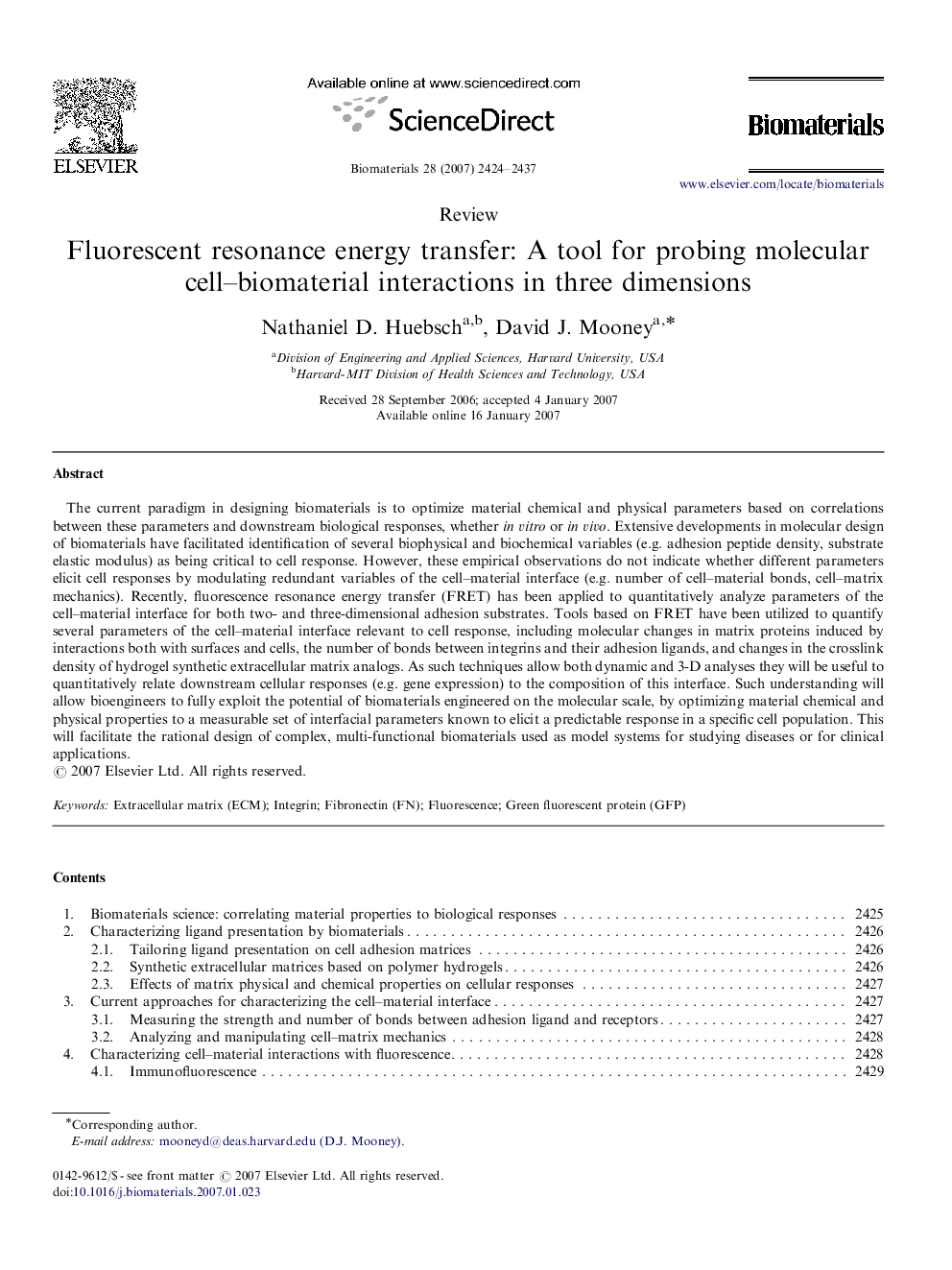| کد مقاله | کد نشریه | سال انتشار | مقاله انگلیسی | نسخه تمام متن |
|---|---|---|---|---|
| 10138 | 667 | 2007 | 14 صفحه PDF | دانلود رایگان |

The current paradigm in designing biomaterials is to optimize material chemical and physical parameters based on correlations between these parameters and downstream biological responses, whether in vitro or in vivo. Extensive developments in molecular design of biomaterials have facilitated identification of several biophysical and biochemical variables (e.g. adhesion peptide density, substrate elastic modulus) as being critical to cell response. However, these empirical observations do not indicate whether different parameters elicit cell responses by modulating redundant variables of the cell–material interface (e.g. number of cell–material bonds, cell–matrix mechanics). Recently, fluorescence resonance energy transfer (FRET) has been applied to quantitatively analyze parameters of the cell–material interface for both two- and three-dimensional adhesion substrates. Tools based on FRET have been utilized to quantify several parameters of the cell–material interface relevant to cell response, including molecular changes in matrix proteins induced by interactions both with surfaces and cells, the number of bonds between integrins and their adhesion ligands, and changes in the crosslink density of hydrogel synthetic extracellular matrix analogs. As such techniques allow both dynamic and 3-D analyses they will be useful to quantitatively relate downstream cellular responses (e.g. gene expression) to the composition of this interface. Such understanding will allow bioengineers to fully exploit the potential of biomaterials engineered on the molecular scale, by optimizing material chemical and physical properties to a measurable set of interfacial parameters known to elicit a predictable response in a specific cell population. This will facilitate the rational design of complex, multi-functional biomaterials used as model systems for studying diseases or for clinical applications.
Journal: Biomaterials - Volume 28, Issue 15, May 2007, Pages 2424–2437